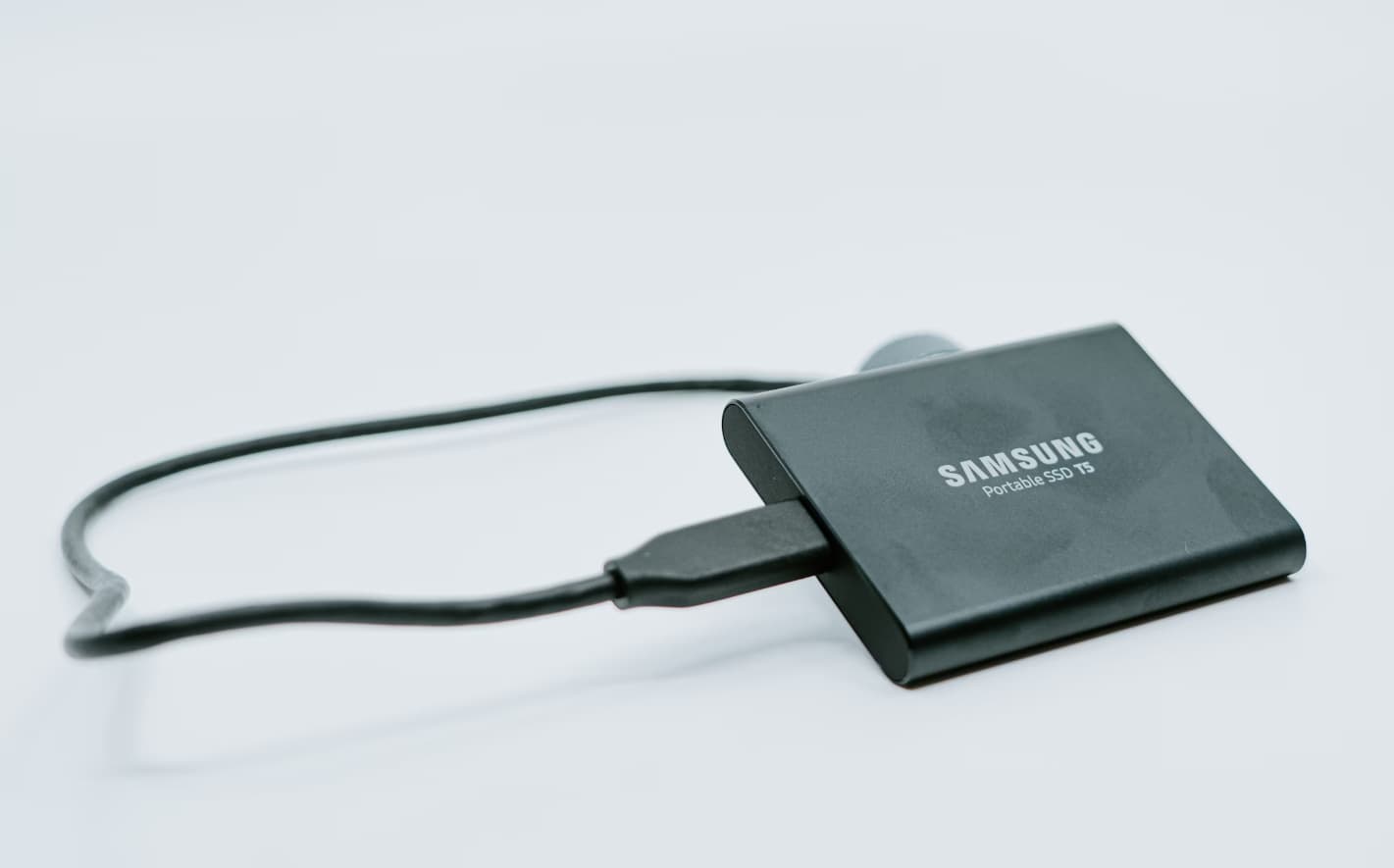Are you thinking about buying a used solid-state drive (SSD) to save some money? SSDs are known for being fast and reliable, but they aren’t cheap when you buy them new.
Getting a second-hand SSD can be a great way to get more storage for less. But is it a good idea?
In this article, we’ll go over everything you need to know about buying a used SSD.
Is it Safe to Use a Second-Hand SSD?

By the end, you’ll have all the info you need to decide if a second-hand SSD is right for you. Let’s dive in!
Things to Check When Buying a Used SSD
Before handing over your hard-earned cash for a pre-owned SSD, there are some important things to consider:
- Compatibility – Make sure the SSD will work with your computer’s hardware and operating system. Incompatible SSDs can cause crashes and data loss.
- Health – Used SSDs won’t be in pristine condition like a new one. Check the drive’s health status and optimize it if needed to help it last longer.
- Brand – Stick with well-known, reputable SSD brands rather than obscure ones. Look for reviews from people who have purchased from that seller before.
- Warranty – Even used SSDs should come with some kind of warranty to protect you if they fail. A few months to a year of coverage is reasonable.
- Security – The SSD should be properly wiped of the previous owner’s data. This keeps your files secure when you start using it.
Pros and Cons of Using Used SSD:

The Pros of Buying a Used SSD
Why would anyone want to get a second-hand SSD? Here are some of the biggest benefits:
- Lower price
One of the most compelling reasons to opt for a used SSD is the significant cost savings compared to buying a new one. SSDs are generally more expensive than traditional hard drives, so getting a pre-owned model can make this speedy storage much more affordable.
You can often find used SSDs with several times the capacity of a new one for the same price. For example, a budget that would only get you a brand new 256GB SSD could potentially land you a 1TB or even 2TB used drive. That’s a dramatic increase in storage space for your dollar.
If you’re upgrading an older system or building a PC on a tight budget, choosing a second-hand SSD can free up funds for other components. It’s a great way to get the performance benefits of solid state technology without breaking the bank.
- Better for the environment
Buying used electronics isn’t just good for your wallet – it’s also a more environmentally responsible choice. E-waste is a growing problem, with millions of tons of devices ending up in landfills every year. SSDs contain precious metals and other materials that require resource-intensive mining and refining processes.
When you purchase a second-hand SSD, you’re extending the useful lifespan of that drive and reducing the demand for new production. This helps conserve natural resources and reduces the pollution and carbon emissions associated with manufacturing.
Additionally, responsible sellers will properly recycle SSDs that are no longer usable, ensuring that toxic components are safely disposed of. By participating in the used market, you’re supporting a more sustainable circular economy.
- Still better than an HDD
While a used SSD may not be in pristine condition, it still offers massive performance advantages over a traditional hard disk drive (HDD). SSDs have no moving parts, which means faster data access, quicker boot times, and speedier file transfers compared to HDDs.
Even an older or well-used SSD will typically outpace a brand new HDD under common workloads. For basic computing tasks like web browsing, document editing, and media playback, a second-hand SSD will provide a snappier, more responsive experience.
SSDs are also more durable and resistant to shock or vibration than HDDs, making them less prone to physical damage. If you’re looking to breathe new life into an aging system, swapping an HDD for a used SSD is one of the most noticeable upgrades you can make.
The Potential Downsides of Used SSDs
Buying second-hand storage isn’t without risks. Keep these potential disadvantages in mind:
- Shorter lifespan
One of the main drawbacks of purchasing a used SSD is the uncertainty around its remaining lifespan. SSDs have a finite number of write cycles, meaning they can only be written to and erased a certain number of times before performance degrades and reliability suffers.
A second-hand SSD will have already undergone some usage, consuming a portion of its total write endurance. This means it may have fewer writes remaining compared to a brand new drive.
However, the impact of this factor varies depending on the specific SSD model and how heavily it was used by the previous owner. Some high-endurance drives are rated for hundreds of terabytes written (TBW) and can last many years even under demanding workloads.
While it’s difficult to assess the exact state of a used SSD, a reputable seller should provide some info about the driver’s age and health status. You can also use diagnostic tools to get a sense of how much life is left.
- Unknown history
Another potential pitfall of buying a pre-owned SSD is that you don’t know the drive’s full history. Unlike when purchasing new from a retailer, you can’t be certain how the previous owner handled the drive.
Factors like extreme temperatures, physical shocks, power surges, or running the drive near capacity can all shorten SSD lifespan. An SSD that was used in a heavy workload environment like a data center or mining rig will have undergone much more stress than one from an average user’s PC.
There’s always some risk that a second-hand SSD has been abused in ways that aren’t immediately obvious. A drive may seem operational but have underlying wear or damage that causes it to fail prematurely.
Buying from a trustworthy, established seller can reduce the chances of getting a lemon. Checking reviews from previous buyers is also helpful for gauging reliability.
- Compatibility problems
Compatibility is another concern when shopping for a used SSD. While SSDs have become widely standardized, older models may have reduced functionality or lack newer features.
For example, an early SATA SSD may not support the same maximum transfer speeds as a newer drive. Some older drives also have more limited error correction capabilities or less efficient garbage collection algorithms.
When buying a used SSD, it’s important to verify that it will work with your particular system and use case. Check the specs carefully and consult your device’s documentation to ensure the drive is compatible with your hardware.
You may need to update your operating system or other software to take full advantage of a second-hand SSD. Newer technologies like NVMe drives may also require specific driver support. Thoroughly research compatibility to avoid frustrating issues down the line.
- Hidden defects:
Even if a used SSD seems to be in good condition, it may have hidden defects that aren’t detectable until the drive is in use. This is particularly concerning if you’re buying from an unknown seller or second-hand marketplace.
Some unscrupulous sellers may attempt to pass off counterfeit or mislabeled SSDs as legitimate. In a worst-case scenario, you could end up with a completely non-functional drive.
More commonly, a used SSD could have subtle firmware bugs or bad blocks that cause data corruption over time. These flaws may not be apparent during initial testing but can lead to lost files or system instability.
Again, choosing a reputable seller with positive feedback can mitigate the risk of getting a defective drive. If possible, run your diagnostic scans before putting any important data on a used SSD.
- Limited warranty:
A final disadvantage to consider with second-hand SSDs is the reduced warranty coverage compared to buying new ones. Brand new SSDs typically come with manufacturer warranties ranging from 3 to 5 years, giving you peace of mind against premature failure.
When you buy a used SSD, the original warranty may have already expired or only have a short period remaining. Some sellers offer their short-term warranties, but these are often more limited in scope and duration.
Without a robust warranty, any issues that crop up with a used SSD will be your responsibility to deal with. You may end up having to pay for a replacement out of pocket.
Weigh the potential cost savings of buying used against the risk of having a drive fail outside of warranty. For mission-critical data or systems you absolutely can’t afford to lose, a new SSD with a longer warranty may be worth the extra expense.
How Long Will a Second-Hand SSD Last?
The lifespan of a used SSD depends on several factors:
- Its age and health when you buy it
- How much it was used by the previous owner
- The workload and stress it was under
- Environmental conditions like heat and humidity
With proper care, a good used SSD can still last a decent amount of time. Here are some tips to extend its life:
- Update firmware regularly for bug fixes and optimizations.
- Use TRIM to clean up deleted data and maintain performance.
- Have a backup system in place in case the drive fails.
- Use encryption to secure your data.
- Monitor drive health status frequently.
So, considering all the pros and cons, is buying a used SSD worth it? Here’s our take:
The Bottom Line on Buying Used SSDs
If you’re on a tight budget, getting a second-hand SSD can be a compelling option. You’ll get a lot more storage space for your money while still enjoying the speed of solid state technology.
However, there are some risks to keep in mind, like shorter lifespan and potential reliability issues. Buying from a reputable seller and checking the drive’s condition carefully can help minimize problems.
Overall, a used SSD can be a great way to get better performance at a lower price. Just be sure to weigh the benefits and drawbacks for your specific needs. With the proper precautions, you can join many other savvy storage shoppers in enjoying the perks of a pre-owned SSD.
Ultimately, the choice between new and used comes down to your budget, storage requirements, and risk tolerance. But we hope this info has helped demystify the process of picking up a second-hand SSD!
Let us know about your experiences with used SSDs (or other storage solutions) in the comments below. And if you found this article helpful, please share it with your friends and followers!
More Useful Guides:



